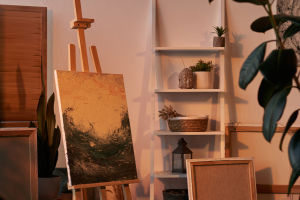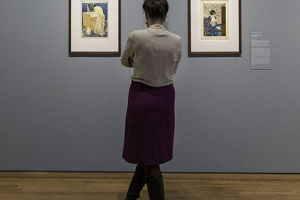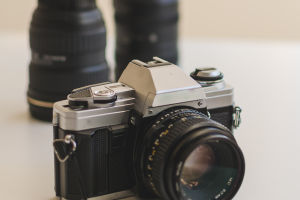Have you ever stood in front of a nearly empty canvas and felt something stir inside you? We have. Minimalist art might look simple at first glance—clean lines, open space, quiet colors—but it often brings out surprisingly strong feelings.
In a world bursting with detail, minimalism makes us pause, reflect, and breathe. It proves that even the quietest voices can speak the loudest.
What minimalist art really means
Minimalism isn't just about removing things—it's about focusing on what truly matters. In art, that might mean a single brushstroke, a square of color, or a perfect circle placed just right. Artists aren't trying to impress with complexity. Instead, they used space, rhythm, and repetition to invite us in. And once we slow down and look closely, we start to notice how powerful that simplicity really is.
We feel more when we see less
At first, it might seem like minimalist pieces are missing something. But over time, we start to see that they're actually offering something rare: room to think and feel. Without distractions, our minds wander into deeper places. The empty space becomes a mirror, reflecting our thoughts, memories, and emotions. That's why a plain white canvas or a simple black square can feel unexpectedly emotional—it's not about the image, but about how we respond to it.
Minimalism in a noisy world
Let's face it—modern life is noisy. We're constantly flooded with images, updates, ads, and colors. Everywhere we look, something's fighting for our attention. So when we walk into a room with a single sculpture or a bare wall with one bold shape, it feels like a break. Minimalist art gives us that silence we didn't even know we needed. It calms the chaos and invites us to slow down.
Every detail counts
In minimalist art, nothing is accidental. A slightly shifted line, a tiny color variation, or the size of the canvas itself can carry meaning. That kind of precision forces us to be present. We have to look carefully, think clearly, and engage more actively. It's a different kind of viewing—one that rewards attention and patience. It may not be loud, but it's full of intention.
Minimalism connects to modern design
We also see minimalism in other parts of life—interior design, fashion, product packaging. Clean lines, neutral tones, and uncluttered spaces are everywhere. This visual language creates a sense of order, peace, and clarity. And when we notice these elements in art, it feels familiar and comforting. It reminds us that simple doesn't mean empty—it means thoughtful.
It's not about what's missing
Sometimes people say minimalist art is "too simple" or "anyone could do that." But the truth is, creating something that looks simple yet feels complete is incredibly hard. It takes confidence to leave things out. Artists have to trust that a small gesture can carry big emotion—and that we, as viewers, will bring our own feelings into the experience.
We get to slow down
Minimalist art doesn't shout. It waits. It gives us time to breathe, think, and feel. We aren't rushing to the next thing—we're sitting with the present moment. And in those moments, we often discover things we didn't expect—about the art, and about ourselves.
Still moving us today
Even though minimalism began decades ago, its emotional impact hasn't faded. In fact, it might feel more powerful now than ever. As we deal with stress, digital overload, and constant multitasking, minimalist art becomes a quiet friend reminding us: you don't need more to feel more. You just need space to feel at all.
How do you respond to minimalism?
Have you ever felt unexpectedly moved by a simple painting or sculpture? What did it bring up for you? We'd love to hear about your experience with minimalist art—because sometimes, a small detail opens the biggest door. Let's keep noticing the quiet beauty in simple things. After all, "less" might be exactly what we need.


